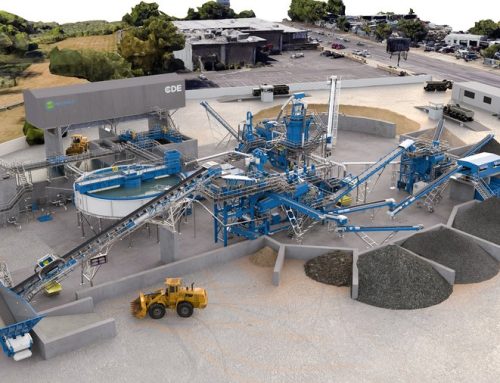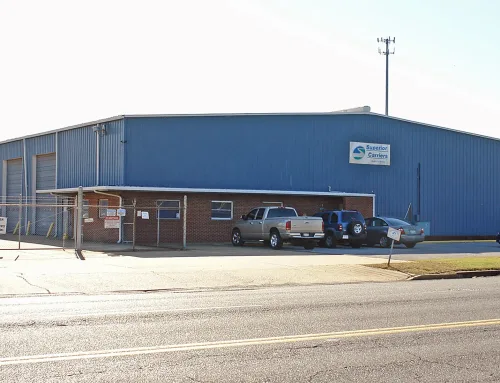
This product type commands higher rents per square foot in comparison to warehouse and distribution assets, notes Zach Harris of Stan Johnson Company.
In today’s highly competitive marketplace, there’s a new subset of industrial real estate that is catching the eye of net lease investors. Industrial outdoor storage properties, also referred to as industrial service facilities, can be distinguished from more traditional industrial assets in several ways.
This subset typically has a much lower floor area ratio in comparison to warehouse or manufacturing properties. FAR values for IOS/ISF facilities typically don’t exceed 20 percent.
Users of IOS/ISF properties find value in the storage capabilities of the excess yard, which are often concrete paved or crushed rock surfaces. Typical uses for these facilities include equipment storage and maintenance, container yards, bulk material storage and distribution, fleet vehicle storage, trailer parking and drop lots. Properties that can accommodate these unique storage requirements are incredibly attractive to tenants in the fields of equipment rental, trucking, building materials, shipping container, chemical, auto/vehicle parking, energy and waste and environmental services, among others.
IOS/ISF assets command higher rents per square foot of building area in comparison to their more traditional industrial counterparts. The additional value that tenants derive from the larger outdoor storage component helps drive this increase. For this reason, rents for IOS/ISF properties are oftentimes quoted in terms of rent per acre per month for ease of comparison in a market or submarket.
Given the outdoor storage component, and oftentimes infill nature of these properties, there is a limited supply of this asset type, resulting in residual values being greater than traditional industrial properties. The renewal rate for tenants in this sector is also quite high, due in large part to the constrained supply of similar properties and higher-than-average replacement costs. Many of these facilities are primed for future alternative uses, but most landlords find that re-tenanting is simply not an issue. Supply is tight, and tenants in this property sector are benefiting from the e-commerce boom that shows no sign of slowing. This creates a “stickiness” that more traditional industrial facilities sometimes lack and helps keep tenants at their current locations.
The following is a detailed description of the key characteristics of the IOS/ISF sector.
Fragmented Market
Historically, IOS/ISF properties have been primarily owner occupied or owned by local or regional private investors, high net worth individuals and small private equity owners. There has been limited competition to-date from institutional investors on one-off acquisitions due to the smaller transaction size, but that is starting to change as more institutional capital is now flowing into the sector seeking diversification and yield from traditional industrial properties.
Limited Supply
The asset subtype has seen very little new development in recent years. It is difficult in many areas to obtain proper zoning and entitlements for new construction. Many communities don’t encourage low density developments, and if zoning and permits are granted, municipalities may require developers to overbuild the site (e.g., fully concrete paved yards).
Low Vacancy Rates
The IOS/ISF sector consistently reports a lower vacancy rate than the broader industrial market. Currently, market intelligence points to an average vacancy rate between 2.0 and 3.5 percent for the subset, compared to 5.0 to 6.0 percent vacancy across the entire industrial market. The limited availability in this space has led to rapidly increasing rental rates in recent years.
Predictable Expenses
Large expense exposure for landlords is very predictable for IOS/ISF assets. Roof, structure and yard maintenance costs are typically the only big-ticket expense improvements on net lease IOS/ISF properties. Some landlords have stated they are willing to take a risk on vacancy because the cost of re-tenanting is significantly lower than nearly all other asset classes, including traditional warehouse buildings.
Shorter Lease Terms
It is common to see initial lease terms for IOS/ISF properties in the 5- to 7-year range, which is often shorter compared to traditional warehouse space. A potential cause is the historical lack of institutional landlords in the sector pushing for longer term leases. Additionally, because many tenants in the IOS/ISF sector are long-term occupants, it is not uncommon to find tenants operating in their lease option periods rather than their initial lease term.
Local & Regional Tenants
The majority of users of IOS/ISF properties are local and regional companies with smaller credit profiles. However, there are a number of tenants that operate hundreds of locations nationwide and report incredibly strong financials. Some of these household names include ABC Supply Co., Airgas, Beacon Roofing, Carvana, Herc Rentals, SRS Distribution, Sunbelt Rentals, United Rentals, WillScot and XPO Logistics, among many others.
By Zach Harris





